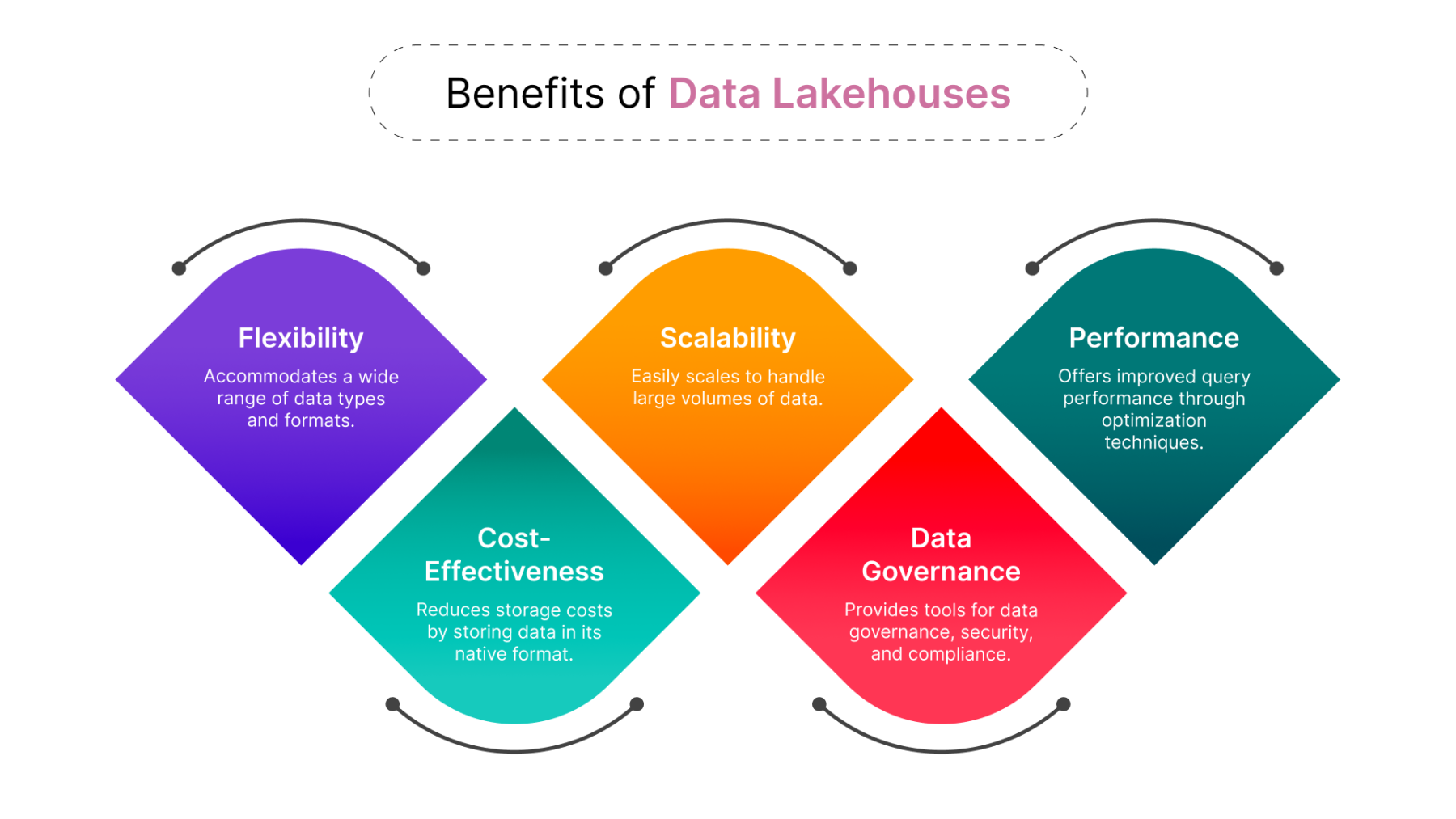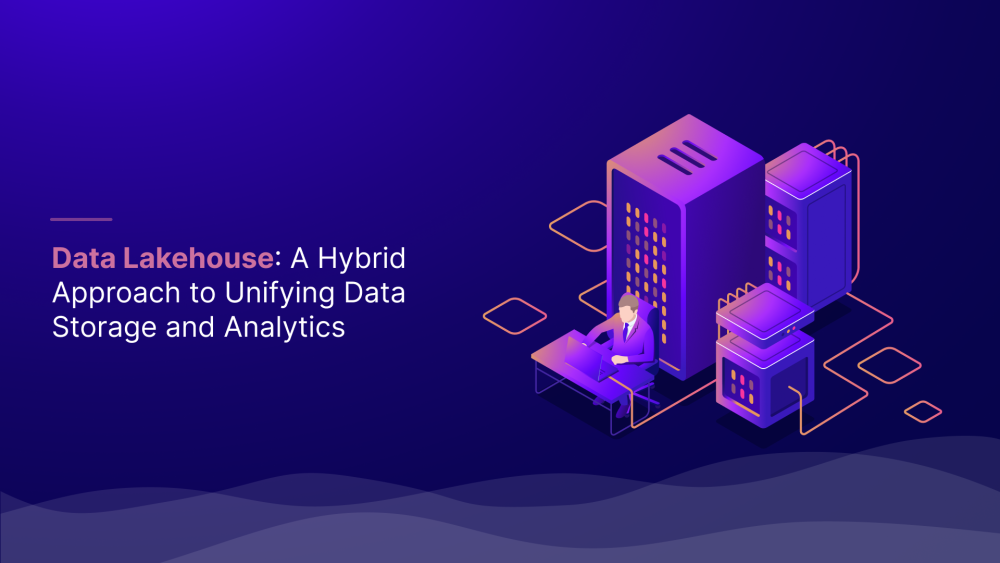The explosion of data has created a pressing need for efficient and scalable data management solutions. Traditional data warehouses and data lakes have emerged as popular choices, each with its own strengths and limitations. In recent years, a new approach has gained traction: the data lakehouse. This hybrid model combines the best aspects of data warehouses and data lakes, offering a more flexible and efficient solution for modern data analytics.
Understanding Data Lakehouses
A data lakehouse is a centralized repository that can store both structured and unstructured data in its native format. Unlike data warehouses, which require data to be transformed and structured before ingestion, data lakehouses can ingest data directly, preserving its original context. This flexibility enables organizations to explore data in new ways and derive valuable insights that might have been missed using traditional approaches.
Key characteristics of a data lakehouse:
-
Unified Storage: Stores both structured and unstructured data in a single repository.
-
Schema-on-Read: Data is not rigidly defined with a schema until it is queried.
-
Data Lake Capabilities: Supports batch and streaming data ingestion.
-
Data Warehouse Capabilities: Provides data governance, security, and performance optimization features.
Benefits of Data Lakehouses
-
Flexibility: Accommodates a wide range of data types and formats.
-
Scalability: Easily scales to handle large volumes of data.
-
Performance: Offers improved query performance through optimization techniques.
-
Cost-Effectiveness: Reduces storage costs by storing data in its native format.
Data Governance: Provides tools for data governance, security, and compliance.
| Feature | Data Warehouse | Data Lake | Data Lakehouse |
| Storage | Structured data | Unstructured data | Both structured and unstructured |
| Schema | Schema-on-write | Schema-on-read | Schema-on-read |
| Processing | Optimized for analytics | Primarily for storage and exploration | Combines analytics and storage capabilities |
| Use Cases | Traditional reporting and analytics | Data exploration, machine learning, and data science | Hybrid use cases, including data warehousing and advanced analytics |

Building a Data Lakehouse
Creating a data lakehouse involves several key steps:
-
Data Ingestion: Develop pipelines to ingest data from various sources, including databases, files, and streaming platforms.
-
Data Storage: Choose a suitable storage platform, such as cloud storage or on-premises storage.
-
Data Governance: Implement data governance policies to ensure data quality, security, and compliance.
-
Data Preparation: Prepare data for analysis by cleaning, transforming, and enriching it.
-
Analytics Layer: Build an analytics layer using tools like SQL, Apache Spark, or specialized data lakehouse platforms.
Tools and Technologies for Data Lakehouses
-
Cloud Platforms: AWS Lake Formation, Azure Synapse Analytics, Google BigQuery
-
Data Lakehouse Platforms: Databricks Lakehouse, Snowflake
-
Data Ingestion Tools: Apache Kafka, Apache NiFi
-
Data Processing Tools: Apache Spark, Apache Flink
-
Data Governance Tools: Collibra, Informatica
Use Cases for Data Lakehouses
-
Advanced Analytics: Machine learning, artificial intelligence, and predictive analytics.
-
Data Science: Data exploration, experimentation, and hypothesis testing.
-
Data Governance: Ensuring data quality, security, and compliance.
-
Real-time Analytics: Processing and analyzing streaming data for real-time insights.
-
IoT Data Analysis: Analyzing data from IoT devices and sensors.
Challenges and Considerations
-
Complexity: Building and managing a data lakehouse can be complex due to its hybrid nature.
-
Performance Optimization: Optimizing query performance requires careful consideration of data structures, indexing, and query optimization techniques.
-
Data Governance: Implementing effective data governance policies can be challenging.
-
Cost Management: Managing costs associated with data storage, processing, and analytics.
Conclusion
Data lakehouses offer a powerful solution for organizations seeking to unify data storage and analytics. By combining the best aspects of data warehouses and data lakes, data lakehouses enable organizations to extract maximum value from their data assets. As data volumes continue to grow, data lakehouses will play a crucial role in driving innovation and decision-making.
How Techwize Can Help
Techwize, with its expertise in data management and analytics, offers comprehensive services to assist organizations in leveraging the power of data lakehouses:
-
Data Lakehouse Implementation: Our experts can help you design, build, and deploy a data lakehouse architecture tailored to your specific needs.
-
Data Migration and Integration: We can assist in migrating your existing data into the data lakehouse and integrating it with other systems.
-
Data Governance and Security: We can implement robust data governance policies and security measures to protect your data.
-
Analytics Development: Our team can help you develop advanced analytics solutions using tools like Apache Spark, SQL, and specialized data lakehouse platforms.
-
Training and Support: We provide training and ongoing support to ensure successful adoption and utilization of your data lakehouse.
By partnering with Techwize, you can accelerate your data lakehouse implementation, optimize your data management processes, and extract maximum value from your data assets.


